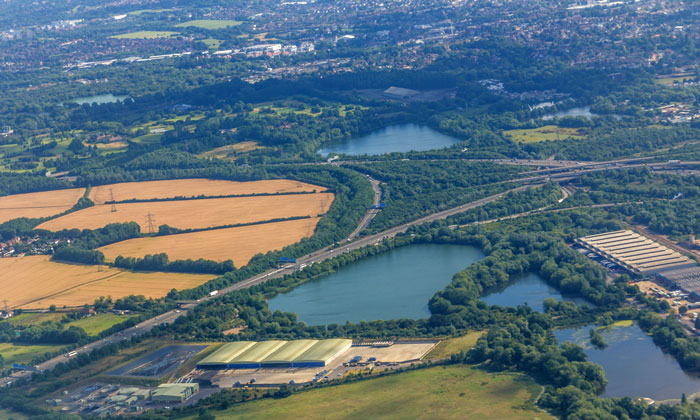Heathrow at PTE – The great expansion challenge
- Like
- Digg
- Del
- Tumblr
- VKontakte
- Buffer
- Love This
- Odnoklassniki
- Meneame
- Blogger
- Amazon
- Yahoo Mail
- Gmail
- AOL
- Newsvine
- HackerNews
- Evernote
- MySpace
- Mail.ru
- Viadeo
- Line
- Comments
- Yummly
- SMS
- Viber
- Telegram
- Subscribe
- Skype
- Facebook Messenger
- Kakao
- LiveJournal
- Yammer
- Edgar
- Fintel
- Mix
- Instapaper
- Copy Link
Posted: 16 March 2017 | Roy Manuell, Digital Editor | 1 comment
How is the UK hub striving to provide a sustainable, environmentally-responsible economic hub for a post-Brexit Britain?


Reporting live from Passenger Terminal Expo 2017, Amsterdam, International Airport Review brings you exclusive insight into the Heathrow’s expansion challenge and reveals how the UK hub is striving to provide a sustainable, environmentally-responsible economic hub for a post-Brexit Britain, following a presentation from Derek Provan, Future Heathrow Director, Heathrow Expansion.
When David Cameron announced “no ifs, no buts, no third runway”, prior to becoming Prime Minister and leading a coalition government in the UK, the possibility of expansion looked gloomy for Europe’s largest airport.
With Heathrow currently running at an unstable and staggeringly consistent 98% of its runway capacity, the airport is more than relieved that the government, now under Theresa May, has changed its tune.
London, one of the world’s most visited cities, widely considered the financial if not business capital of Europe, has struggled for decades with the number of passengers arriving in the UK. Despite boasting three airports that process over 15 million passengers per year – including Gatwick which is the largest single runway airport in the world – both Gatwick and Heathrow Airports are grossly overstretched capacity-wise.
Consequently, in 2012, the government decided to commission a report (known as the Davies Report) that lasted until 2015 in order to best analyse the solution to London’s capacity problem. It took almost three years and £20 million but following its publication it was unanimously decided that Heathrow’s expansion was the best of the 56 proposals considered.
Benefits?
Based on the report, Heathrow alleges that the third runway will create up to 180 000 jobs and bring an estimated £211 billion in economic benefit to the UK. It cannot be denied that with the impending exit from the European Union’s relative economic security, Britain is becoming increasingly reliant on Heathrow – it’s main air cargo importer – to pave a new way forward.
Clauses in the contract
That said, the Davies Report set out no fewer than 11 conditions which had to be met by the UK hub when achieving the expansion; largely focused on sustainability and responsible development.
As Derek Provan stressed in his presentation at PTE, Heathrow’s expansion is not just about an overarching UK economic imperative. Its success ultimately rests upon it ability to expand with respect for its local community.
Noise abatement (or lack of) and poor environmental results often added currency to the “No third runway” campaign and contrasted with Gatwick’s aggressively impressive environmental development over the past few years.
The gravity of the challenge afoot
Sustainable development is at the core of many of the Davies Report’s conditions. For example that all green spaces damaged must be replaced and furthermore, in expanding from 75 million annual passengers to the proposed 130 million, Heathrow must somehow reduce the airport-related level of traffic on Britain’s roads.
In order to do this, Provan sensibly asserts that the Heathrow train and coach network must be drastically improved. Congestion is a significant issue. Night flights will also have to be stopped.
Heathrow, however, appears to enjoy the support of the UK commercial and business network as well as the regional airports such as Liverpool John Lennon, Leeds and Newcastle who themselves are looking for integration within the UK hub’s international network.
Further positive movements include the fact that Heathrow has successfully either met or succeeded all 11 conditions set out by the Davies Report and consequently the good news was brought by new Transport Minister Chris Grayling on 16 October 2016 that the third runway had received permission to be built.
“We aim to have the first aircraft land in 2025,” Provan stated in Amsterdam. We shall see however, as many political and socio-economic hurdles remain on the horizon.
Challenges ahead
The first struggle that Heathrow will face, as suggested by Provan, is that the airport will have to keep its landing charges similar to their current level, which is demanded by the government.
Sustainability will also present a significant challenge for many reasons, which Provan went on to list, including:
- The redirection of six rivers
- A tunnel under or bridge over the M25, a key ring road that circles London and connects the capital with the entire UK
- The purchase of 4,000 homes
- The purchase and demolition of six hotels, various office blocks, etc.
- The maintenance of UK sustainability and CO2 requirements
- The shift from 480,000 to 740,000 movements while reducing noise pollution and improving air quality.
How will this be achieved?
“We are putting in measures to achieve the above and are confident this will be possible,” Provan stated as he brought his talk to a close. “The importance of airline collaboration cannot be underestimated.”
Heathrow has asked airlines, for example, to voluntarily retrofit A320s with quieter engines at the cost of approximately £4,000 per engine.
Furthermore, in order to increase physical capacity, Heathrow is drawing influence from Cornwall’s iconic Eden Project construction.


The concept is called ‘Third Space’ and essentially entails that buildings are lightweight, cheap and thus flexible and adaptable to change. Construction itself is less polluting and there is both an environmental and economic cost reduction. While this is still being discussed, in essence Heathrow’s ambitions are set very firmly within a sustainable model.
Both recognising its key significance in a post-Brexit UK and aviation’s responsibility in a changing environment, Heathrow’s discussion at PTE, Amsterdam very much set its expansion’s emphasis on the ecological. Having been previously criticised for its environmental awareness, this is highly promising for Europe’s largest airport.
Related topics
Aeronautical revenue, Airport construction and design, Sustainability



















Too bad the new runway won’t be open for years to come! Then, too, the runway could always be delayed by innumerable court challenges!